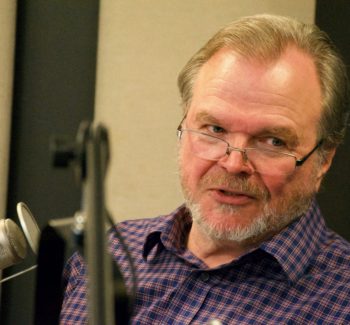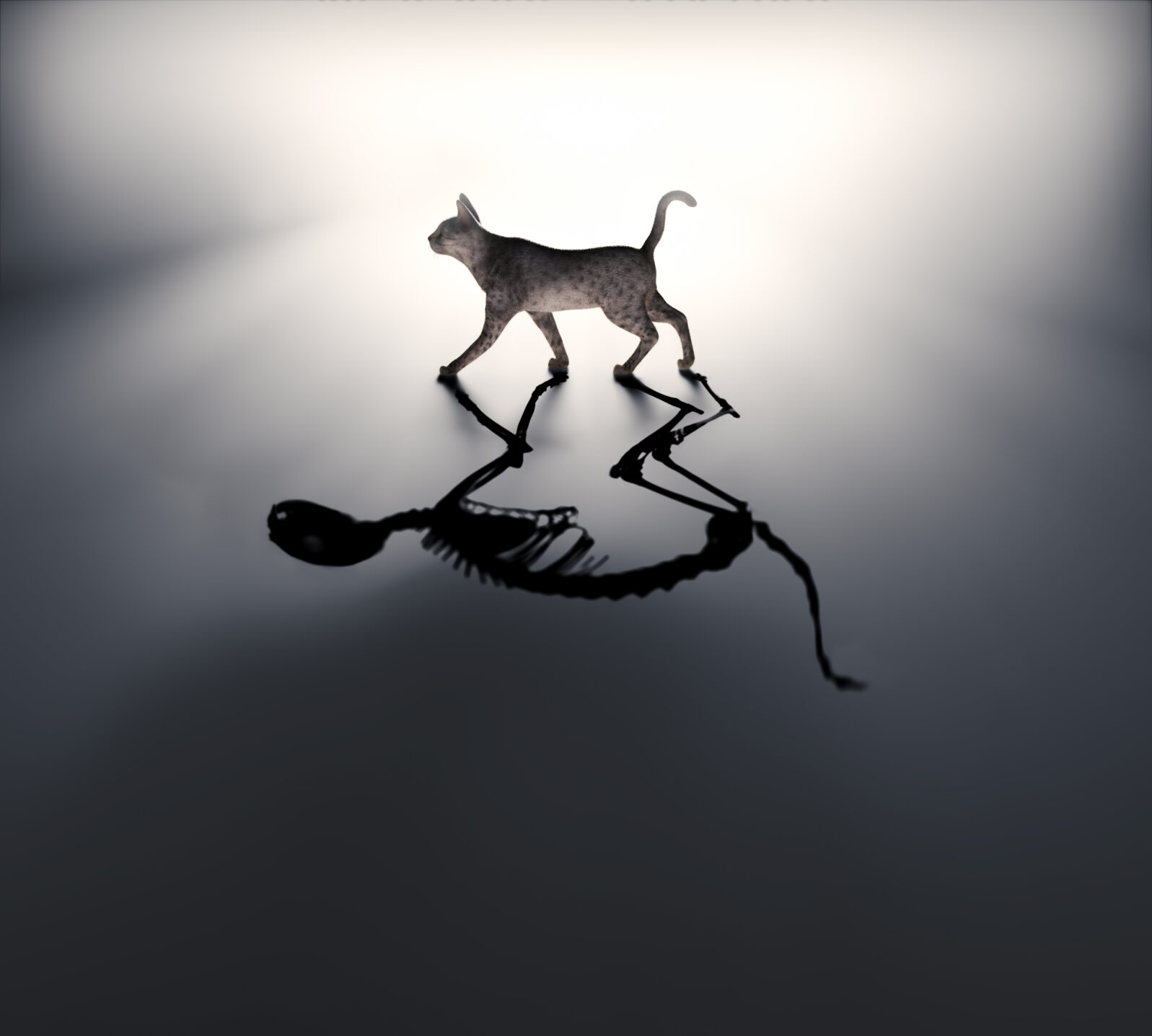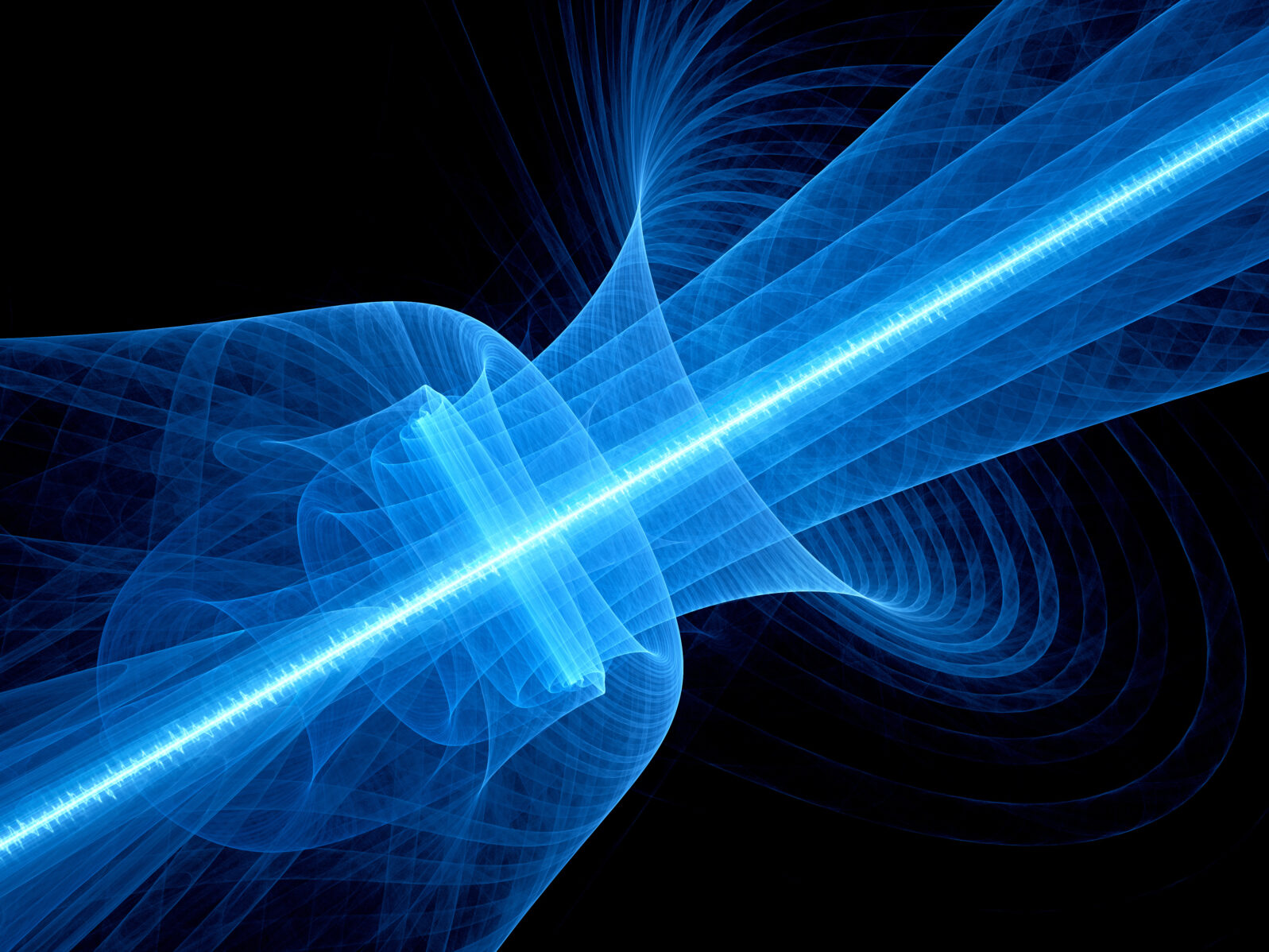The Final Ambiguous Truth About Schrödinger’s Cat
Schrödinger came up with the cat illustration to explain quantum mechanics to interested people who were not physicistsIn last week’s podcast, “Enrique Blair on quantum computing,” Walter Bradley Center director Robert J. Marks talks with fellow computer engineer Enrique Blair about why quantum mechanics is so strange. Inevitably, the discussion turned to what really happened with Schrödinger’s cat, the one who is either dead or alive only if we actually look at it.
[Schrödinger’s cat starts approximately at 21:50.] The Show Notes and transcript follow.
Excerpts from the transcript:

Robert J. Marks (pictured): We hear a lot in popular culture about Schrödinger’s cat. Now, Erwin Schrödinger (1887–1961) was one of the guys who formulated quantum mechanics. He won a Nobel Prize for it. He was trying to explain quantum mechanics to a layperson and he used this idea of Schrödinger’s cat.
Enrique Blair: Oh, that is a fun story. To help out with this, I am going to quote from a translation of Schrödinger’s paper, originally in German: “A cat is placed in a steel chamber together with the following hellish contraption. In a Geiger counter, there is a tiny amount of radioactive substance so that within an hour, one of the atoms decays. But equally probably, none of them decays.”
“So we’ve got a 50/50 chance of getting an atomic decay. If one decays, then the counter triggers. And via a relay, activates a little hammer which breaks a container of cyanide. If one has left this entire system for an hour, then one would say the cat is living if no atom has decayed. The first decay would have poisoned it. The wave function of the entire system would express this by containing equal parts of the living and dead cat.”
Enrique Blair: The idea here is, okay, we’ve got these atoms and they’re in a quantum superposition of decayed and not decayed, which means that if we don’t look at it, maybe the detector is in a state of detected or not detected, and then the vial of cyanide is in a state of broken and not broken, and then the cat—
Robert J. Marks: At the same time?
Enrique Blair: Right. And then the cat is in a state of dead and alive.
Robert J. Marks: And that’s superposition?
Enrique Blair: That is superposition taken to a very great extreme. We know that’s not really possible now, is it?
Robert J. Marks: Well, I don’t know. Quantum mechanics is so weird, maybe it is. But it means the cat is half dead and half not dead, right?
Note: As Dr. Marks observes, the uncertain cat has become an icon of popular culture. Here are a few typical jokes:
➤ I accidentally ran over Schrödinger’s cat.
Not sure if I should feel guilty or not.
➤ Schrödinger’s Cat recently went on a crime spree
He’s wanted dead and alive
and
➤ “As a quantum physicist opening the box with Schrodinger’s cat, do you expect it to be dead or alive?”
“Yes”
Enrique Blair: Right. Maybe I shouldn’t say that it’s not possible, but we don’t really observe something like this in real life.
Robert J. Marks: Yeah, and that begs the question, why do we never see such superposition?
Enrique Blair: There are a lot of theories behind why this is. It really gets down to the question of, what is measurement. Right? Because we would like to believe that the cat really is dead or it’s really alive. But by the Schrödinger’s cat paradox, if you haven’t looked at it, then it’s both dead and alive. What is going on here? What is measurement and how does it determine this state: Is the cat dead, is it alive?
Interestingly, there are a lot of theories behind what determines this. Some people have said, “Well, measurement is what happens when a quantum system interacts with a human consciousness.”

Enrique Blair (pictured): I don’t know about that one because, what if a dog looks at it? Is the cat still in a superposition? It sort of reminds me of that thing, if a tree falls in the woods and no one’s there, does it happen?
Other theories say that measurement happens when a microscopic system interacts with any macroscopic system. But then you have to wonder, well, where do you draw the boundary between microscopic and macroscopic?
One of the leading theories is called quantum decoherence. I mean, the resolution here is that the quantum system interacts with the environment and these quantum behaviors die away so you lose the ability to be in a quantum superposition. It’s at a timescale so fast, you don’t even have time to set up your experiment.

It’s also the case that the cat and the Geiger counter are macroscopic objects. They don’t really behave like this. They don’t partake in quantum superpositions. Why is that? It’s because they are many, many quantum subsystems and they lose their coherence or their ability to partake in these quantum properties so fast because they’re so complex.
Robert J. Marks: That is really, really strange stuff. In a way, just by this uncertainty existing in some environment, it reacts with the environment to begin to lose its coherence in some fashion.
Enrique Blair: That’s right.
Robert J. Marks: It isn’t the observation, it’s actually the interaction with the surroundings. Is that a fair thing to say?
Enrique Blair: I think that’s the way I like to think about it.
Next: Spooky action at a distance actually makes sense—in the quantum world
Here are the earlier parts in the series:
Part 1: Here’s why the quantum world is just so strange. It underlies our universe but it follows its own “rules,” which don’t make sense to the rest of us. Computer engineer Enrique Blair explains to Robert J. Marks the simple experiment that shows why so many scientists find the quantum world “mind-blowing.”
Part 2: How scientists have learned to work with the quantum world. It’s still pretty weird, though. Wave function mathematics can work with particles that may be in different places (quantum superposition). QM can also generate truly random numbers we can use.
You may also enjoy:
Does Schrödinger’s cat think quantum computing is a sure thing? It might lead to more security, though not to thinking computers. Quantum computing means computing directly with quantum elements, thought to underlie all matter in the universe. In theory, it will be faster and safer.
Show Notes
- 00:54 | Introducing Dr. Enrique Blair, a professor of electrical and computer engineering at Baylor University
- 03:08 | The history of quantum mechanics
- 13:16 | Quantum superposition
- 21:50 | Schrödinger’s cat
- 27:45 | Why didn’t Einstein like quantum mechanics?
- 28:51 | Quantum entanglement
- 32:58 | Applications of quantum mechanics
- 34:53 | Quantum dots
- 37:31 | Quantum computing
- 43:48 | The use of quantum computers
- 47:55 | Quantum supremacy
- 55:32 | Quantum communication
- 58:47 | The future of quantum computing
Additional Resources
- Enrique Blair’s website
- Copenhagen Interpretation of Quantum Mechanics at Standford Encyclopedia of Philosophy
- Young’s double-slit experiment at Encyclopædia Britannica
- Planck’s explanation of black-body radiation at Encyclopædia Britannica
- Quantum superposition at Wikipedia
- Nobel Prize in Physics 1932 — Werner Heisenberg
- Nobel Prize in Physics 1933 — Erwin Schrödinger
- Many-Worlds Interpretation of Quantum Mechanics at Stanford Encyclopedia of Philosophy
- Schrödinger’s cat at Wikipedia
- Quantum entanglement at Wikipedia
- Quantum bit (qubit) at Wikipedia
- Quantum dots at Wikipedia
- Shor’s algorithm at Wikipedia
- RSA at Wikipedia
- Grover’s algorithm at Wikipedia
- Quantum supremacy at Wikipedia
- IBM on Google’s claim of quantum supremacy
- Quantum communication at MIT Technology Review
- Adiabatic quantum computation at Wikipedia
